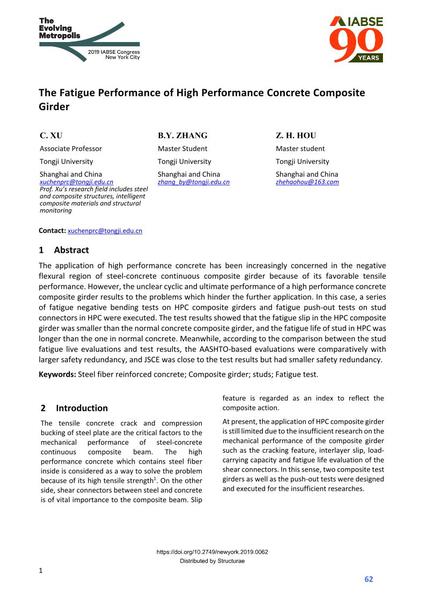The Fatigue Performance of High Performance Concrete Composite Girder

|
|
|||||||||||
Bibliografische Angaben
| Autor(en): |
C. Xu
(Tongji University)
B. Y. Zhang (Tongji University) Z. H. Hou (Tongji University) |
||||
|---|---|---|---|---|---|
| Medium: | Tagungsbeitrag | ||||
| Sprache(n): | Englisch | ||||
| Tagung: | IABSE Congress: The Evolving Metropolis, New York, NY, USA, 4-6 September 2019 | ||||
| Veröffentlicht in: | The Evolving Metropolis | ||||
|
|||||
| Seite(n): | 62-66 | ||||
| Anzahl der Seiten (im PDF): | 5 | ||||
| DOI: | 10.2749/newyork.2019.0062 | ||||
| Abstrakt: |
The application of high performance concrete has been increasingly concerned in the negative flexural region of steel‐concrete continuous composite girder because of its favorable tensile performance. However, the unclear cyclic and ultimate performance of a high performance concrete composite girder results to the problems which hinder the further application. In this case, a series of fatigue negative bending tests on HPC composite girders and fatigue push‐out tests on stud connectors in HPC were executed. The test results showed that the fatigue slip in the HPC composite girder was smaller than the normal concrete composite girder, and the fatigue life of stud in HPC was longer than the one in normal concrete. Meanwhile, according to the comparison between the stud fatigue live evaluations and test results, the AASHTO‐based evaluations were comparatively with larger safety redundancy, and JSCE was close to the test results but had smaller safety redundancy. |
||||
| Stichwörter: |
faserverstärkter Stahlfaserbeton
|
||||
